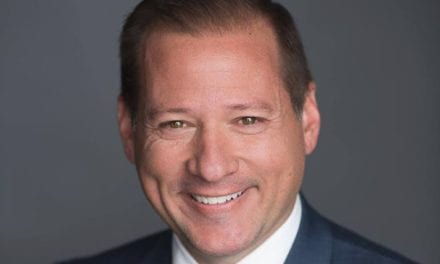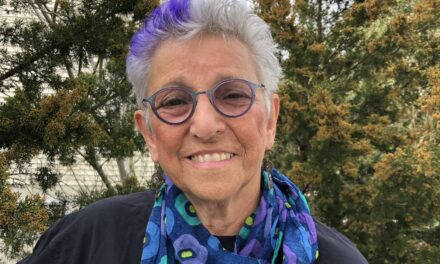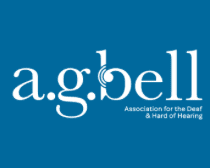With Fall sports season in full swing, it’s a good time to revisit the risks of hearing damage for student athletes and shine a light on how HCPs can raise awareness.
By Melanie Hamilton-Basich
Nearly 8 million students compete in high school sports every year, according to The National Federation of State High School Associations High School Athletics Participation Survey, and the number of college student athletes competing in NCAA championship sports in 2021-22 reached over 520,000. That’s in addition to elementary and middle school students participating in sports. Benefits of student athletics include getting exercise, learning teamwork, developing discipline, and building friendships. But one of the drawbacks is that, especially in contact sports, students are at risk for hearing loss.
Unfortunately, this is not something that is top of mind for many athletes and coaches.
Dangers of Impact
In football, for example, “There’s the possibility of head injury when they’re tackling, when they get hit, and when they fall on the ground, and if they fall very hard on their side, they could get a temporal bone fracture or other damage to inner ear structures that could affect hearing,” says Jagadish M. Swamy, AuD, owner and president of Clear Sound Audiology in Gainesville, Fla.
Contact sports such as soccer and hockey unsurprisingly pose similar risks, but many other sports can also leave students with injuries affecting the ears and head. Fast-moving balls in tennis and baseball as well as errant equipment like rackets and bats can hit students and affect their hearing.
In clinical practice, most hearing care professionals encounter patients with hearing loss due to sports injuries because they have had direct ear trauma that ruptured the tympanic membrane or damaged the ossicles in the middle ear. Other patients may come to an audiologist after suffering a traumatic brain injury (TBI) or concussion that had an adverse impact on the auditory pathways in the brain. “With any concussion, a hearing loss should be ruled out,” says Zhanneta Shapiro, AuD, director of audiology at Audiology Island in Staten Island, NY.
Swamy adds that if an athlete experiences any hearing difficulties, tinnitus, vertigo, or dizziness after a collision while playing sports, they should immediately see a physician, and follow up with a hearing care professional (HCP) for further testing. However, people without noticeable symptoms might not realize they need such medical attention.
“It’s worth noting that auditory problems may not appear immediately after an accident. They might appear days, weeks, or even months later,” says Shapiro. “As a result, people participating in contact sports should undergo audiological assessments, especially after suffering head injuries, to ensure early identification and provide intervention.”
Hearing care professionals know how important all of this is. Unfortunately, not everyone is as aware of athletes’ increased risk of hearing loss and tinnitus, and how audiological care could help them. This includes the dangers of noise exposure.
Further reading: CHOP Study Reveals Balance, Vision Issues Common in Children with Concussion
Noise Exposure
Swamy himself recently attended a college football game where the noise in the stands was unsafe. He was wearing hearing protection, as he always does at sporting events. But not everyone was.
With 90,000 people in attendance and fans shouting their support, the University of Florida’s Ben Hill Griffin Stadium was dangerously loud. From his seat in the bleachers, Swamy measured the noise at 120 decibels. “120 decibels is as loud as a jet engine, and it was sustained for three or four minutes,” he says with concern. “And there could have been peaks, so it might have gotten even louder.”
The digital screen on the field had instructed fans to “Make some noise!” and they did. A friend of Swamy’s was attending the game with him. He usually eschews hearing protection as a matter of pride, but his ears were in so much pain at that point that he asked to use the extra ear plugs the audiologist had brought with him. As for the players on the field, the din was so overwhelming that they were having difficulty communicating with each other, which affected their plays.
Because of the way sound travels in this stadium in particular, trapping fan noise with its steep enclosed stands that come right up to the field all the way around, it’s one of the loudest in the country, especially at the level of the field. This exposes players and coaches to dangerously high sound levels. While not every student athlete will experience such extreme noise exposure during games, that doesn’t mean the repeated noise they do experience should be discounted. Such exposure over time can inflict increasing damage.
While it may be unrealistic for most athletes to wear hearing protection during games because they need to be able to hear their coaches, Swamy and Shapiro agree that athletes and coaches should be vigilant in monitoring for signs of any hearing issues so they can be addressed as soon as possible.
Strategies for Raising Awareness
“Most people associate hearing loss with older adults or babies born with congenital conditions,” says Shapiro. They don’t tend to think about children or teens as being at risk for hearing damage while playing sports. This is why she says “The more awareness we can bring to hearing health and its importance, the better.”
What can HCPs do to raise awareness about the dangers of hearing loss for athletes? A varied approach is essential. Delivering the message in person and with targeted campaigns via more traditional means as well as newer avenues such as social media platforms helps to reach multiple segments of the community.
Swamy distributes pamphlets and flyers at local libraries, community events, and in physicians’ offices—of both primary care and various specialists—as well as at university athletic training centers. But he also suggests combining this with a more proactive approach, including educating coaches of local sports teams about hearing loss and helping to develop a series of simple tests they can perform on the field to determine if a player’s hearing has been affected after a collision, similar to those used to check vision for signs of a possible concussion.
Other ideas include giving talks about hearing safety in contact sports at various community outreach events, and even creating public service announcements in conjunction with speech and hearing centers at local universities to air on local radio stations.
Shapiro recommends that hearing care professionals work with local athletic departments such as high school teams and recreational sports leagues in their communities to conduct hearing screenings at both the beginning and the end of their sport seasons to document changes over time in athletes’ hearing that indicate a need for intervention, with both audiograms and high-frequency testing. But she’s found wider community outreach efforts are also effective in spreading the word.
“In our clinic, one of our most successful initiatives has been distributing free earplugs at various sports events and ‘loud’ community gatherings (events with DJs),” says Shapiro. “By offering immediate, tangible solutions, we’ve found attendees are more likely to engage in protective behaviors. The earplugs not only serve as a preventive measure but also as a conversation starter, prompting questions about hearing health and the implications of noise exposure.”
She and her colleagues also write blog posts on their clinic website to bring awareness to hearing issues and hold educational seminars at local high schools with the aim of instilling good auditory health practices early on. They even have a mascot shaped like an ear they call Righty, who makes appearances at community events and serves as both an educational and engagement tool for kids and adults.
“Over the years, we’ve found that a mix of direct interventions (like earplugs), educational endeavors (like high school seminars), and engaging, memorable campaigns (like our mascot) strikes the right balance in effectively reaching different segments of our community and promoting the importance of hearing protection,” says Shapiro.
A Success Story
The more people are aware of the importance of hearing health, especially related to sports injuries, the more people will seek out and benefit from treatment, regardless of the cause.
Shapiro has a patient who was hit in the head with a basketball in her school gym in seventh grade. She told her parents she noticed she wasn’t able to hear as well as she used to, and they took her to Shapiro’s audiology clinic.
“Sure enough, I identified a nerve-related hearing loss on her right side,” says Shapiro. “After several tests and working with an otologist, it was determined (based on imaging testing) she had an underlying condition called enlarged vestibular aqueduct that predisposes her to hearing loss if there is trauma to the head.”
Thankfully, wearing a hearing aid helped the student get back to her “normal,” to be able to hear in the classroom and when talking with her friends, Shapiro says. Now in ninth grade, the student regularly visits Shapiro’s audiology clinic to monitor her hearing, which can fluctuate, and to adjust her hearing aid settings as needed.
Seeking help for her injury-induced hearing loss helped this student thrive despite her condition. Failing to seek hearing care would have likely resulted in her having difficulty in school and having problems with social interactions, both of which can be devastating to childrer’s development.
Shapiro says of her patient, “She has become a great advocate for each teen to have a baseline hearing test because, as she says, ‘You never know what can happen.’”
Featured image: Conducting baseline hearing tests for all student athletes at the beginning and end of every season can document changes over time. Then when an athlete is injured during a game or practice, a hearing care professional will be able to compare against previous data to help determine if the impact has caused hearing loss. Photo: Dreamstime





